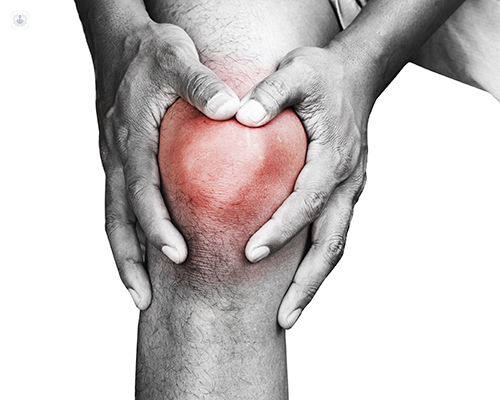All you need to know about knee replacement surgery for osteoarthritis
Escrito por:Knee replacement surgery can be a hugely beneficial surgical procedure for patients to undergo, particularly those suffering from some degree of osteoarthritis in the knee.
Here to reveal and explain when exactly a knee replacement would typically be offered to patients with osteoarthritis, and whether osteoarthritis would more often than not result in total or partial knee replacement surgery, is esteemed consultant orthopaedic surgeon, Mr Amol Chitre.

When is a knee replacement offered for osteoarthritis?
People should consider a knee replacement for osteoarthritis when the knee becomes painful enough that they cannot manage. So, we look at X-rays, we look at how people walk, the shape of the knee, and the overall movement in the knee. Ultimately, though, it boils down to when it is painful enough to warrant an operation.
A knee replacement, can, of course, be a big operation. The pain level and how patients can manage this pain level is very different for all patients. There are people who have horrible looking x-rays, but have little pain and can manage to do all the things they want to do. Equally, there are plenty of people who have much better X-rays, but suffer from terrible pain. These patients will, thus, have a knee replacement much sooner than others.
Does osteoarthritis result in total or partial knee replacement?
The main determinant of that is the amount of arthritis that people have in the knee. In general, the knee can be divided into three areas: the area behind the kneecap, the area on the inside, and the area on the outside.
Now, if only one of these areas are affected, then we can usually proceed with a partial knee replacement. If two more areas are affected though, we would tend to carry out a total or full knee replacement.
Is knee replacement surgery a major operation?
It certainly is for those undergoing it. For us surgeons, it is a fairly routine operation but that should not belittle the impact it has on people. It can affect how people can walk and affects one of the major joints of the body. The surgery generally takes about an hour.
How soon can knee replacement be performed after the first consultation?
It depends. If a patient is fit and active, they can undergo the surgery around two weeks after the first consultation. Other patients might require more investigations, so they would have to wait a little bit longer.
What is the cost of knee replacement surgery based on?
The easiest bit to see is the cost of expertise that you are getting. So that will be the surgical cost and the anaesthetic cost. The hospital you are being treated at will, of course, also charge for the services. This will include the implants that are being put into the knee, time spent in the hospital, and the cost of providing a safe working environment to work in.
What are the main risks of knee replacement surgery for osteoarthritis?
They can be significant but thankfully extremely rare. The main potential risks include:
- infection
- blood vessel damage
- nerve damage
- numbness
- bleeding
- blood clots
We would expect a knee replacement to last a minimum of ten years, and after that period of time, it can be fairly variable.
How does a knee replacement improve one’s quality of life?
It generally leads to a significant reduction in pain. 80 per cent of patients will report no pain after having a knee replacement.
Mr Amol Chitre is a specialist when it comes to knee replacement surgery. If you are considering undergoing this surgical procedure, make sure you book a consultation with him today via his Top Doctors profile.


